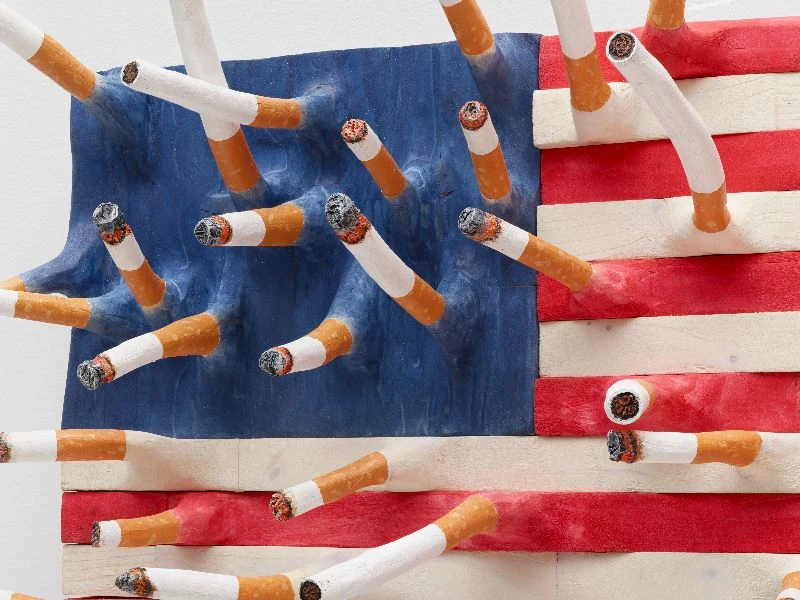Hugh Hayden
27 Sep-1 Nov 2025


A dining table engulfed in flames, a lifeboat lined with thorns, a child’s dress fashioned from tree bark—these are among the striking new works featured in Hughmanity, Hugh Hayden’s first return to London since his 2020 debut with the gallery was abruptly closed just days after opening due to COVID-19 restrictions. Now staging his seventh show with Lisson Gallery, the Texan-born artist expands upon his ongoing investigation of congregation, passage and assimilation through the transformation of familiar cultural symbols into allegories of community, rupture, and belief.
At the center of Hughmanity is The Last Supper (2025), a stretched table encircled by flames and rendered unreachable. Dining tables, he reminds us, are not only sites of joy and communion but also of fraught family gatherings, unspoken grief, or absence. The flames that rise from its surface also echo religious and art historical precedents, from Leonardo da Vinci’s composition of the same name to Ed Ruscha’s Burning Gas Station. Suspended nearby, 13 cast-bronze skillets embedded with African masks extends the allegory. First conceived as “melting pots” in his previous London exhibition, American Food, these skillets now embody Jesus and his disciples. Their forms and polished surfaces suggest both individuality and collectivity. Together, the fiery table and its floating counterpart form a pairing that questions the conditions under which communion, whether spiritual, social or cultural, can occur.
Tension between refuge and danger shapes The Good Samaritan (2025), a dinghy lined with Christmas-tree branches that point inward toward the boat’s center. Partially navigable with its two oars left clear of thorns and a small smooth space remaining at its core, the boat hovers between promise and threat. The vessel recalls Hayden’s earlier Gulf Stream (2022), inspired by Winslow Homer’s painting of a lone fisherman adrift at sea. Here, though, the narrative shifts toward an Ark-like allegory of passage and survival.
Elsewhere, painted wooden flags punctured by cigarettes, pencils or snakes fragment patriotic imagery into narratives of anxiety, erasure, and defiance. One flag adorned with fifty wooden cigarettes in place of stars, presents a portrait of a nation under strain. Another, Gone with the Wind (2025), is studded with erasers seemingly caught in motion. In Medusa (2025), the fifty stars are replaced with carved snakes, their writhing presence casting the banner as both myth and menace. These works collapse the line between patriotism and critique, underscoring how a nation’s or a person’s identity can be rewritten through conflict, erasure, and resistance.
Nearby, a sharply tailored blazer lined with thorns recalls the traditions of English suiting and emphasizes how such markers of status can also torture. Other works, including Pinocchia (2025), a bark-covered child’s dress layered with pink tulle, men’s dress shoes and a set of Mary Jane flats all encased in bark, highlight the tension between blending in and being defined, or even being consumed, by the very structures that promise acceptance.
Taken together, these works lend Hughmanity a spiritual undertone that oscillates between Biblical allegory and contemporary critique: the burning table as both Moses’s bush and America’s dream set aflame; the lifeboat as both Noah’s Ark and a vessel of forced migration; the Apostolic faces as both sacred icons and appropriated masks. As in earlier public projects—from Brier Patch (2022), a forest of thorny school desks in Madison Square Park, to The End (2025), a skeletal form slowly dissolving into the New England woods—Hayden turns familiar forms into metaphors for entropy, exclusion, and renewal.